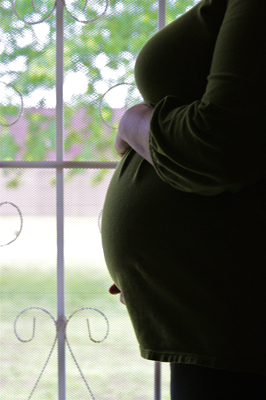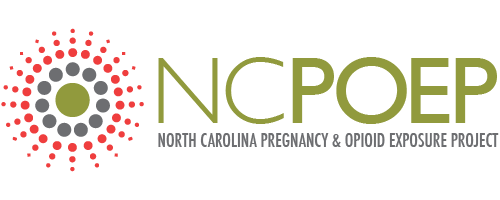The cycle of opioid use and withdrawal is particularly problematic for the developing fetus. A repeated pattern of use and withdrawal compromises the blood flow to the fetus, leading to insufficient oxygen levels. These problems are primary contributors to increased risk of prematurity, low birth weight, and fetal death. Comprehensive prenatal care is essential to improve outcomes for mother and child.
 For several decades, the standard of care for pregnant women with opioid use disorders has been medication-assisted treatment. At appropriate dosages and with proper monitoring, the synthetic opioid methadone can be safely used in pregnant women to eliminate symptoms of withdrawal, reduce drug cravings, and block euphoric effects if other opioids are used. The long half-life of methadone and a predictable schedule of dosing prevents drastic fluctuations in the opioid levels in the fetus; the stabilized exposure level is associated with a longer duration of the pregnancy and improved fetal growth. As the pregnancy progresses, methadone is metabolized more rapidly in the mother’s body and higher doses are required. Although some early reports suggested the dose of methadone was correlated with the incidence and severity of neonatal withdrawal signs, recent evidence has not demonstrated that relationship.[1],[2] It is now well understood that lowering the dose during pregnancy may lead to increased illicit opioid use, exposing the mother and fetus to more harm. Buprenorphine, a partial opioid-agonist, is approved by the United States Food and Drug Administration for the treatment of opioid addiction in an outpatient office setting. Although not yet approved for use in pregnancy, increasing evidence on the impact of the mother and baby is informing the promise of buprenorphine’s role as part of the continuum of care of treating opioid use disorders during pregnancy.[3],[4]
For several decades, the standard of care for pregnant women with opioid use disorders has been medication-assisted treatment. At appropriate dosages and with proper monitoring, the synthetic opioid methadone can be safely used in pregnant women to eliminate symptoms of withdrawal, reduce drug cravings, and block euphoric effects if other opioids are used. The long half-life of methadone and a predictable schedule of dosing prevents drastic fluctuations in the opioid levels in the fetus; the stabilized exposure level is associated with a longer duration of the pregnancy and improved fetal growth. As the pregnancy progresses, methadone is metabolized more rapidly in the mother’s body and higher doses are required. Although some early reports suggested the dose of methadone was correlated with the incidence and severity of neonatal withdrawal signs, recent evidence has not demonstrated that relationship.[1],[2] It is now well understood that lowering the dose during pregnancy may lead to increased illicit opioid use, exposing the mother and fetus to more harm. Buprenorphine, a partial opioid-agonist, is approved by the United States Food and Drug Administration for the treatment of opioid addiction in an outpatient office setting. Although not yet approved for use in pregnancy, increasing evidence on the impact of the mother and baby is informing the promise of buprenorphine’s role as part of the continuum of care of treating opioid use disorders during pregnancy.[3],[4]
In addition to the concern regarding withdrawal, the prevalence of hepatitis B, hepatitis C, and human immuno-deficiency virus (HIV) is elevated in women who are pregnant and have an opioid use disorder, primarily due to needle sharing and unsafe sex practices.[5],[6] Women should be screened for these infections, and in the case of HIV infection, treatment should be initiated.
The management of an opioid use disorder in pregnancy is highly complex and attention must be focused on medication and the complicated psychological and social needs of these women. A high number of women with substance use disorders have histories of intimate partner violence, and other traumas (including childhood abuse), have a low level of education, are financially limited, and have difficult relationships with partners who may also have substance use disorders. The families that many of the women grew up in experienced multiple challenges, including a high prevalence of substance use disorders. Many of these women may also have co-occurring mental health struggles, most commonly depression and bipolar disorder, and suffer from low self-esteem.[7]
Regardless of the source of the opioid exposure during pregnancy, women need to be informed of the possibility of NAS for the infant and provided information on how it will be managed and treated at the hospital of delivery. An unexpected admission to a Neonatal Intensive Care Unit (NICU) can cause crisis, stress, and guilt. Providing the mother and her support system, with an opportunity to prepare for NAS, can assist in preventing a crisis and can help her engagement in the caretaking of her infant.



